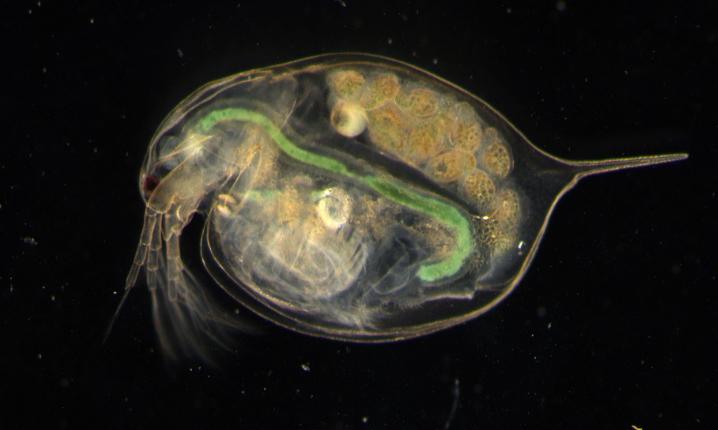Water-absorbing green foam widely used by florists is contributing to the world’s microplastic problem

Credit: Image: Charlene Trestrail, RMIT University
As the cut flower industry hits one of its busiest periods, new research has shown that the water-absorbing green floral foam used by florists is contributing to the world’s microplastic problem.
A study by RMIT University published in Science of the Total Environment found the plastic foam, which breaks into tiny pieces, can be ingested by a range of freshwater and marine animals and affect their health.
Charlene Trestrail from RMIT’s Ecotoxicology Research group said the study – the first to examine the environmental effects of foam – looked specifically at the impact of this widely-used substance on aquatic animals.
“We tested a range of invertebrates with different feeding modes and all animals ingested the foam, with some species demonstrating stress responses as a result of consuming the material,” said Trestrail, a PhD researcher in the School of Science.
The vast majority of florists who use foam are disposing of floral foam particles down the sink, according to a recent survey by the Sustainable Floristry Network.
The survey of more than 1200 florists globally found two-thirds of florists use foam, and of those that do, 72% pour the foam wastewater down the sink or drain, while 15% add it to the garden or soil.
A social media trend of crushing floral foam, often directly into the sink, is also adding to floral foam pollution issues, with one video promoting the fad amassing 70 million views. Each foam block is equivalent in weight to around 10 plastic bags.
Rita Feldmann, Founder of the Sustainable Floristry Network, said the research confirms the suspicions of concerned florists who are questioning the product and reverting to more sustainable, old-fashioned methods of floral design.
“For an industry that seeks to celebrate nature, we are actually adding to environmental problems when using this product,” Feldmann said.
“Disposal issues have stemmed directly from a lack of user information about the product on packaging and at the point of sale.
“For the past 60 years, florists all over the world have been pouring it down the sink or putting it in the soil. And we have no idea what customers do with it – we do know that it is regularly buried with coffins.”
Fighting against floral foam
Floral foam has been the base medium of choice for florists all over the world since its invention in the US by manufacturer Smithers Oasis in the 1950s.
The RMIT study showed the floral foam microplastics also leach chemicals into the surrounding water and these were more toxic to aquatic invertebrates than leachates from other plastic families.
Trestrail said more research was needed to better understand the impact of ingestion of the particles and related compounds on animals.
New global organisation the Sustainable Floristry Network has been created on the back of the #nofloralfoam movement started by Feldmann, with many florists among the 33,000 following the @nofloralfoam Instagram account.
Backed by highly regarded florists from around the globe, the Sustainable Floristry Network aims to support florists to transition to more sustainable practices by providing free education on foam-free floristry and sustainable floral design and business practices.
The network will also provide a guide for how customers can find a sustainable florist.
###
The study, Foaming at the mouth: Ingestion of floral foam microplastics by aquatic animals, with senior authors Professor Dayanthi Nugegoda and Professor Jeff Shimeta, is published in Science of the Total Environment (DOI: 10.1016/j.scitotenv.2019.135826).
Media Contact
Gosia Kaszubska
[email protected]
61-417-510-735
Original Source
https:/
Related Journal Article
http://dx.




